

Simulacra
拟像, 2021
Oil, plastic, MDF
200W x 120H x 5D CM
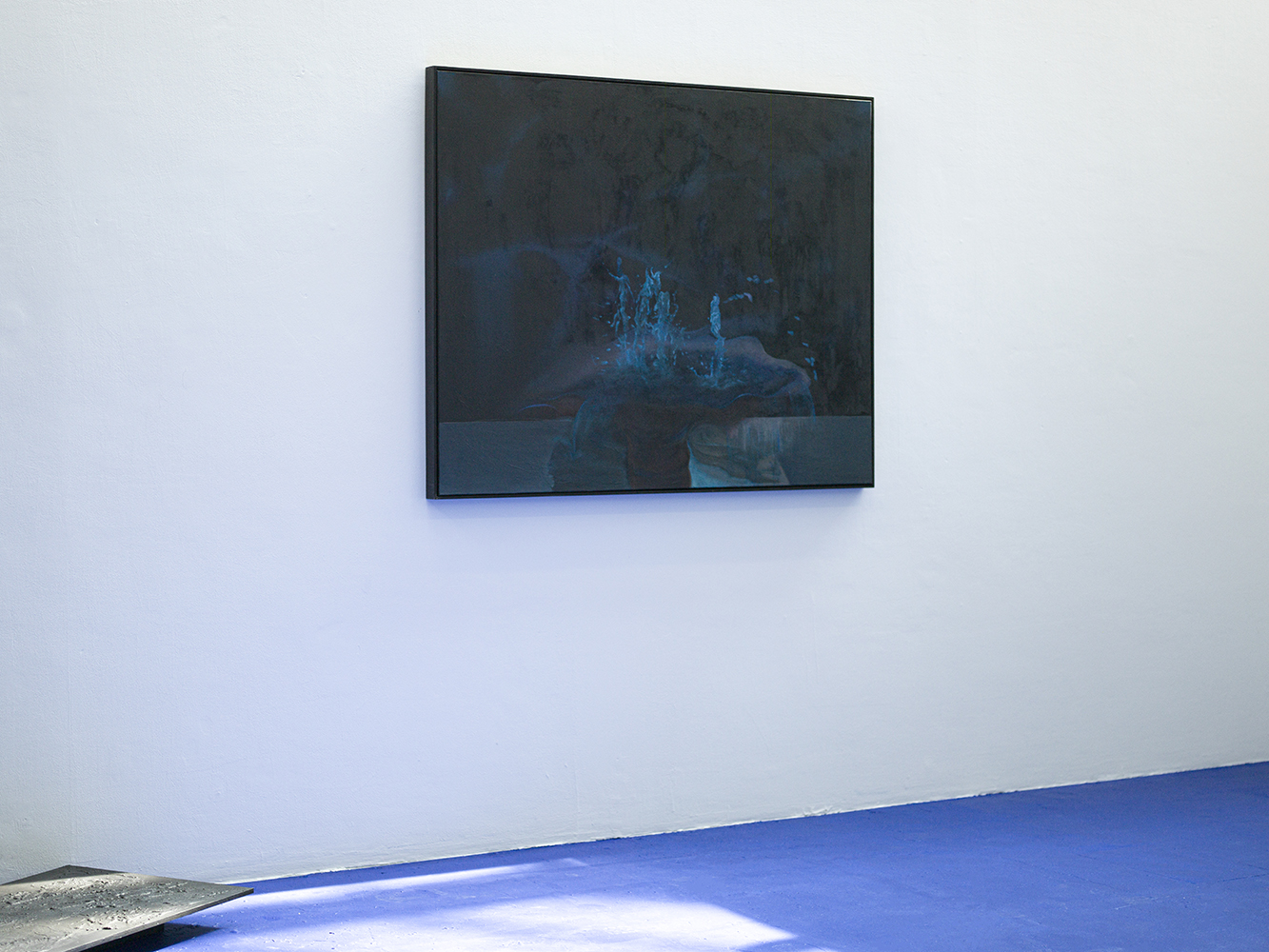

Synecdoche of construction
构建提喻法, 2021
Oil, airbrush, MDF
152W x 122H x 5D CM
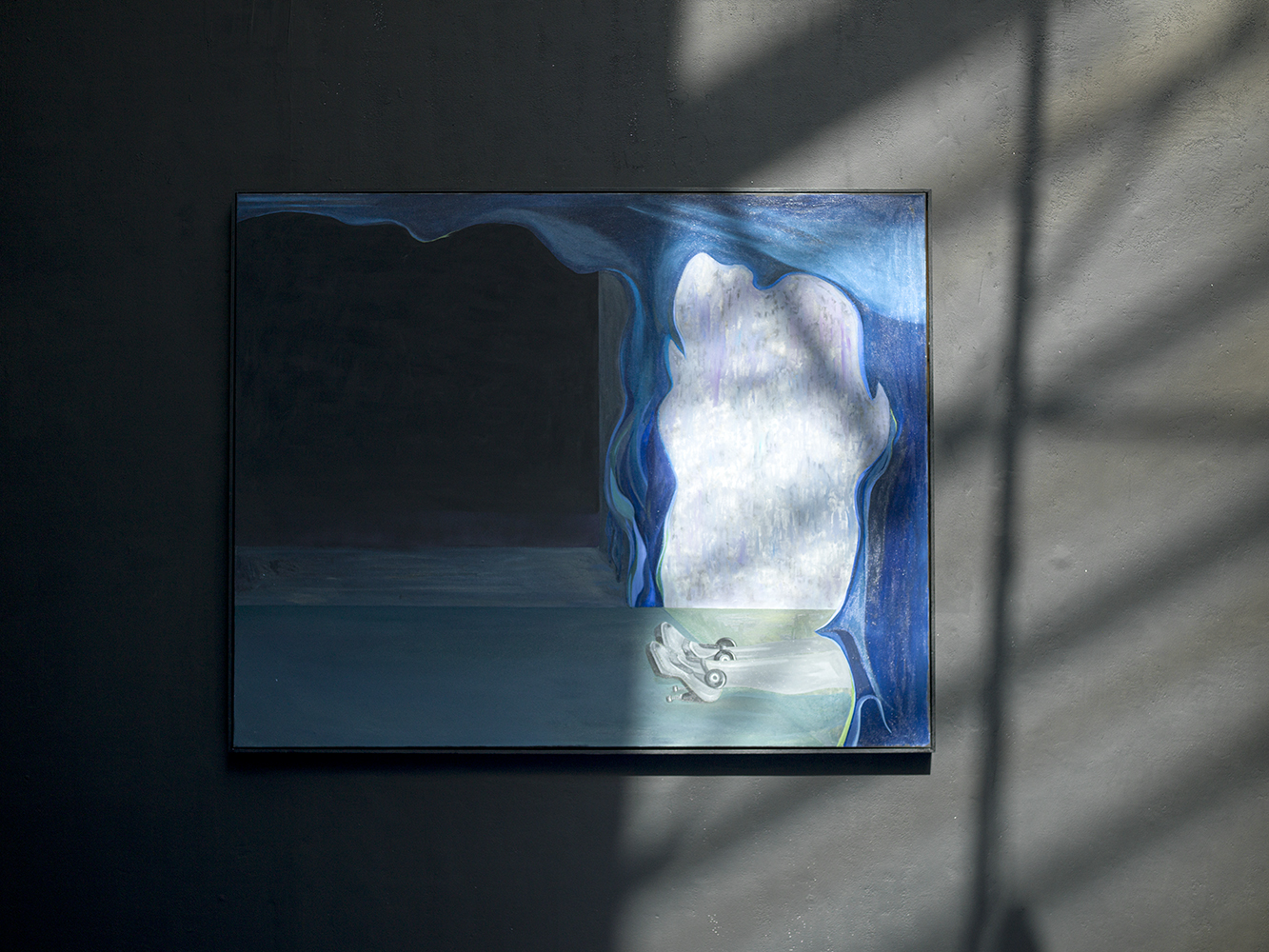
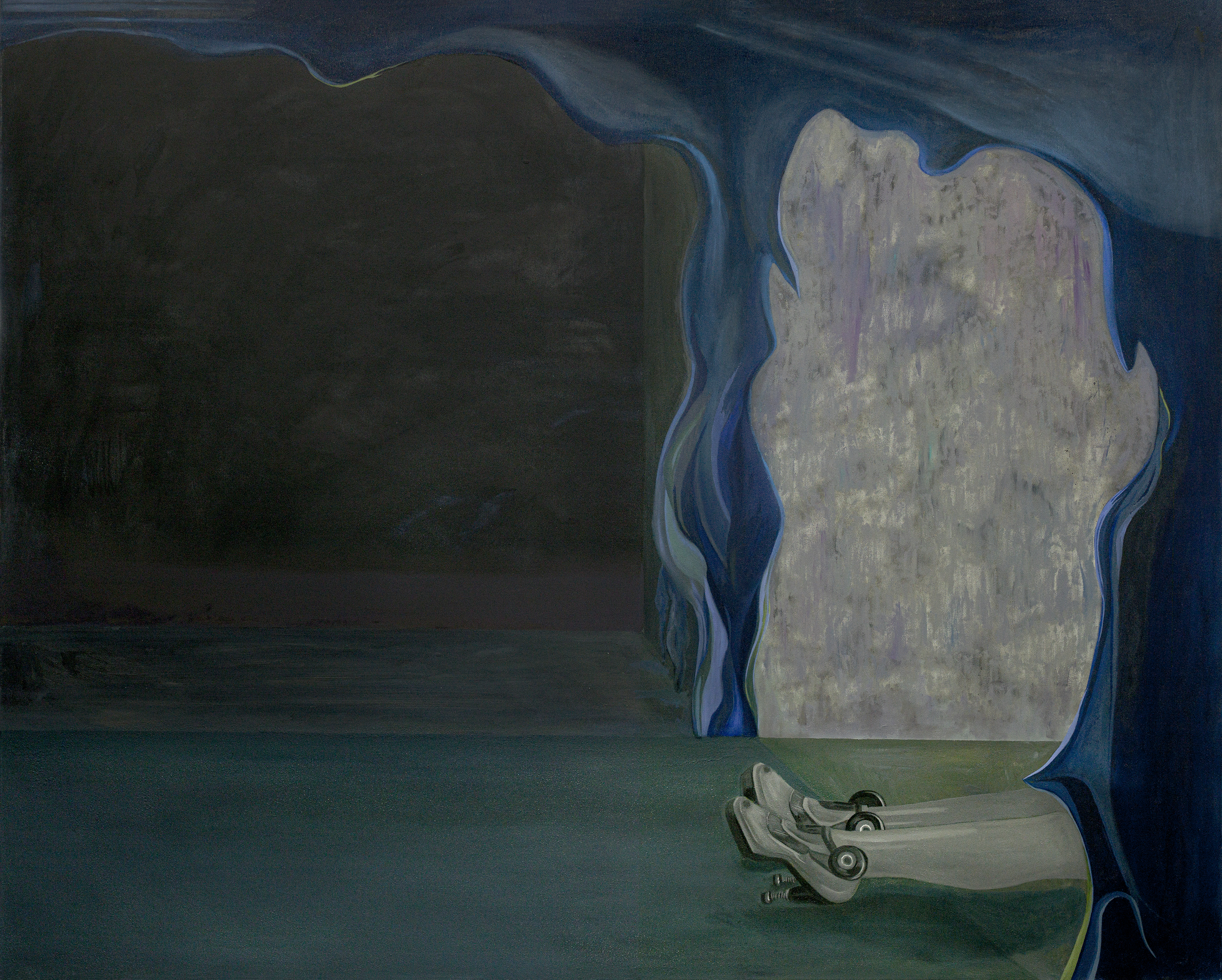
Cybernetic syntax in limbo
中间状态的控制论空间句法, 2021
Oil, acrylic, resin, MDF
152W x 122H x 5D CM
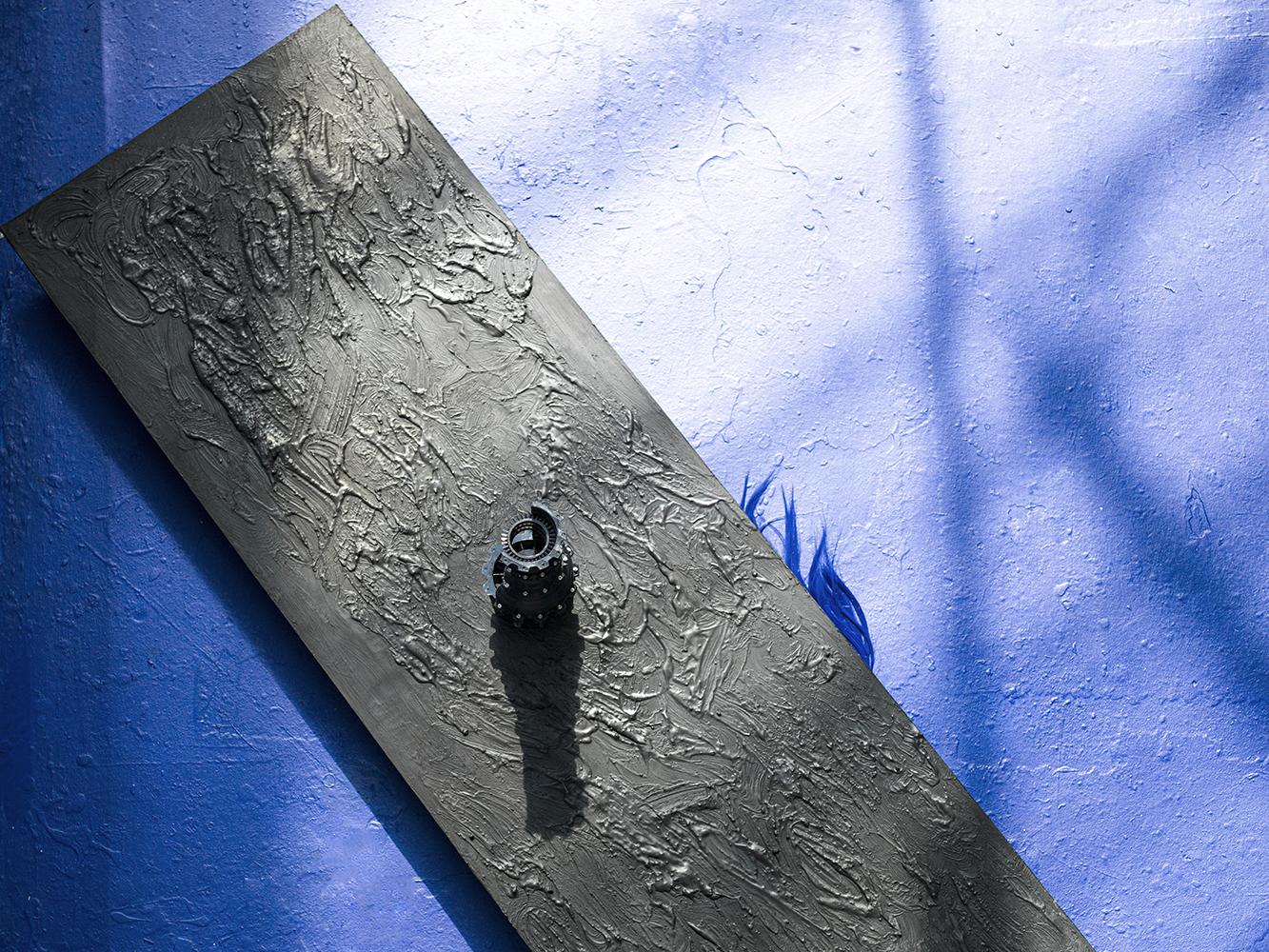
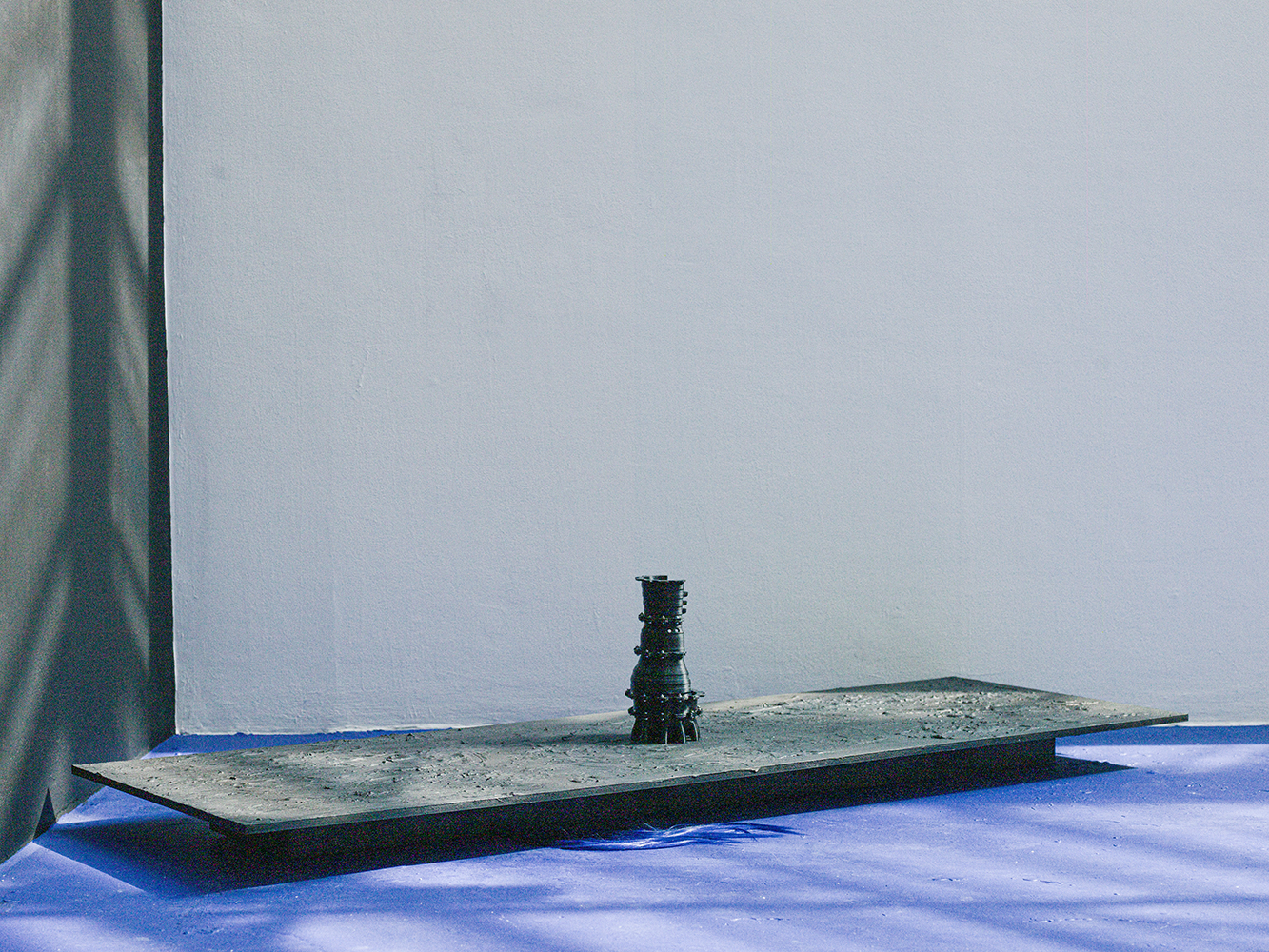
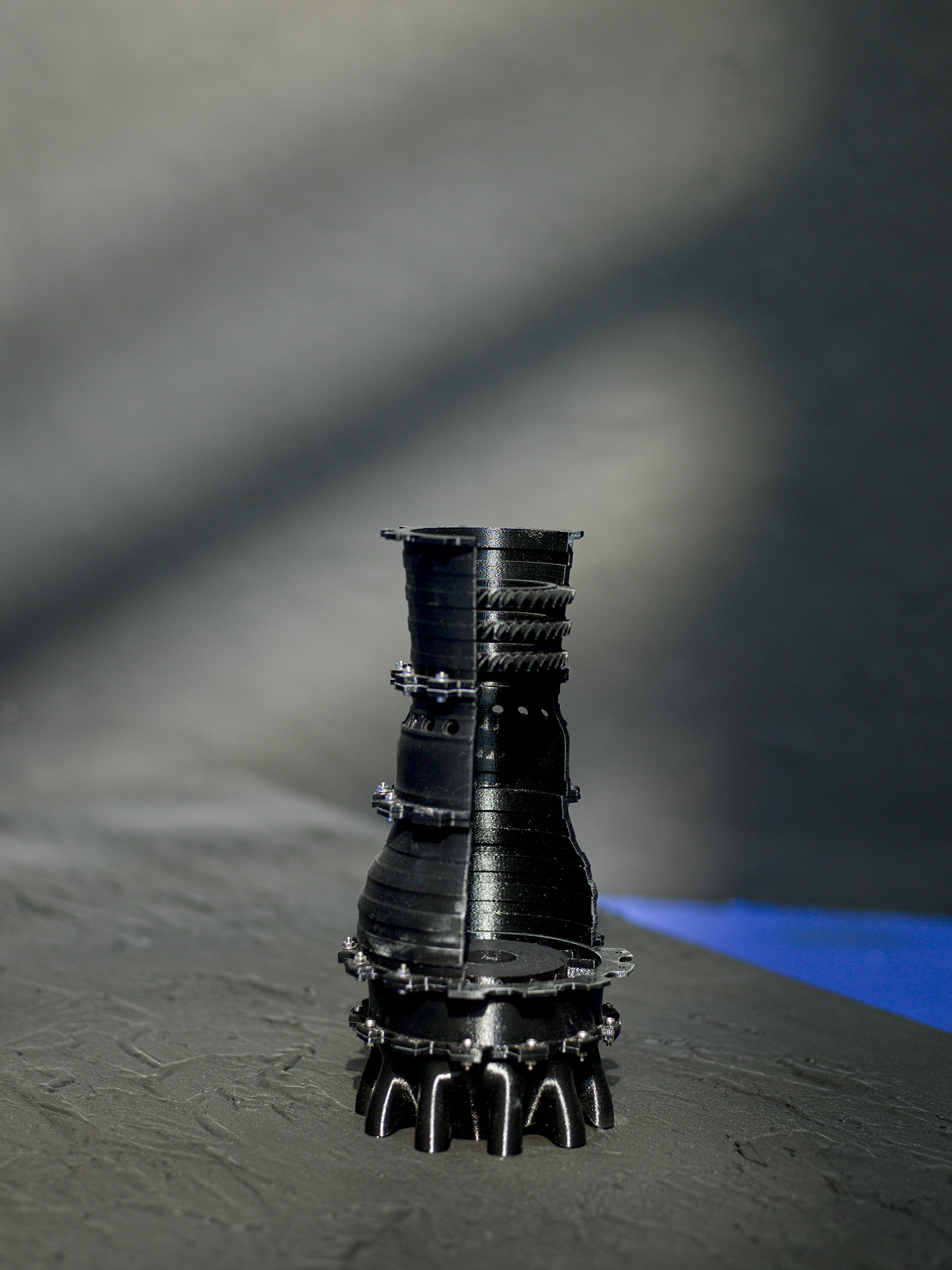
Associated milieu
关联的环境, 2021
Jasmonte coated wood, wax, wig, PVA
180W x 60H x 10D CM, 15W x 35H x 15D CM
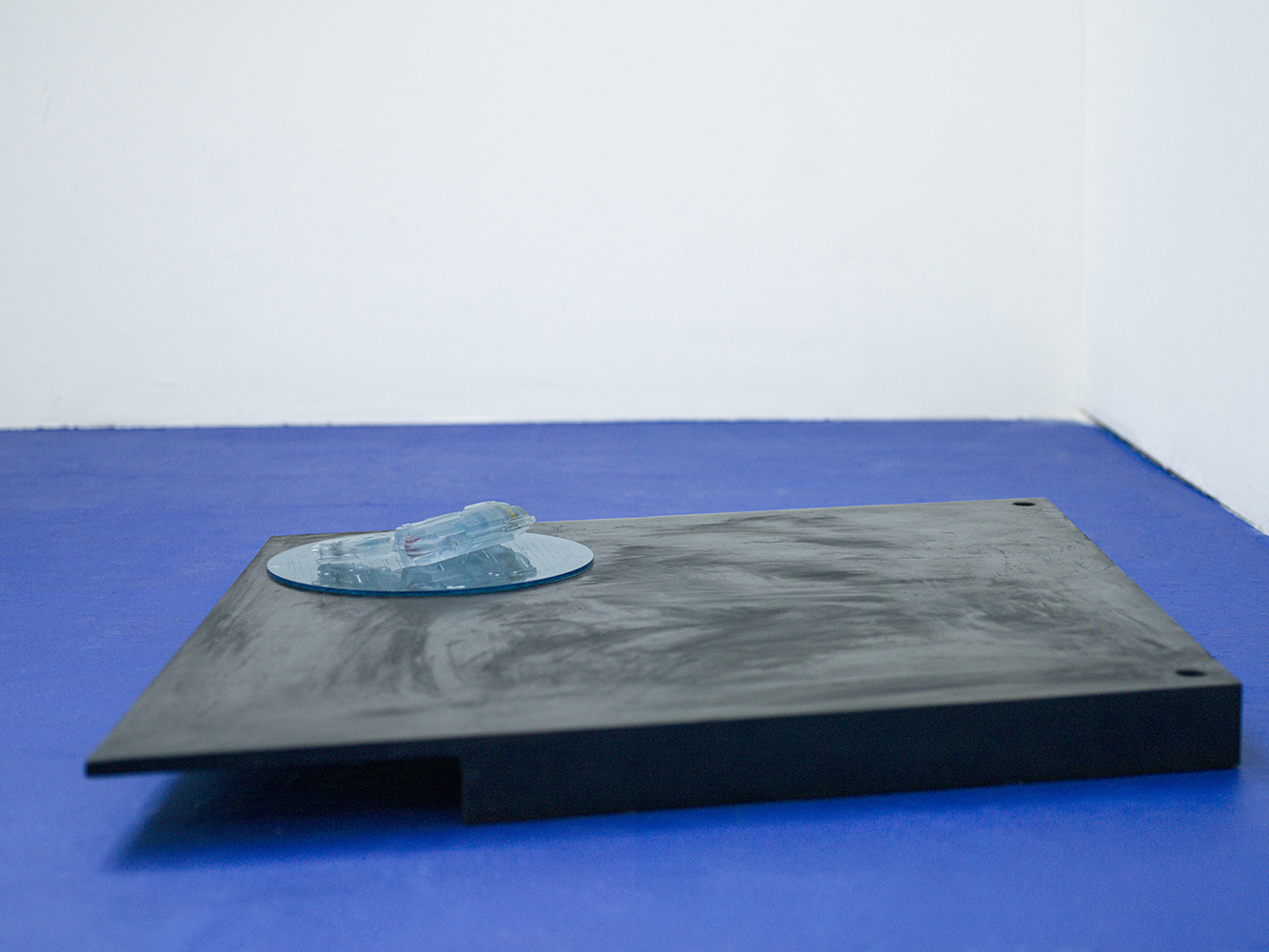

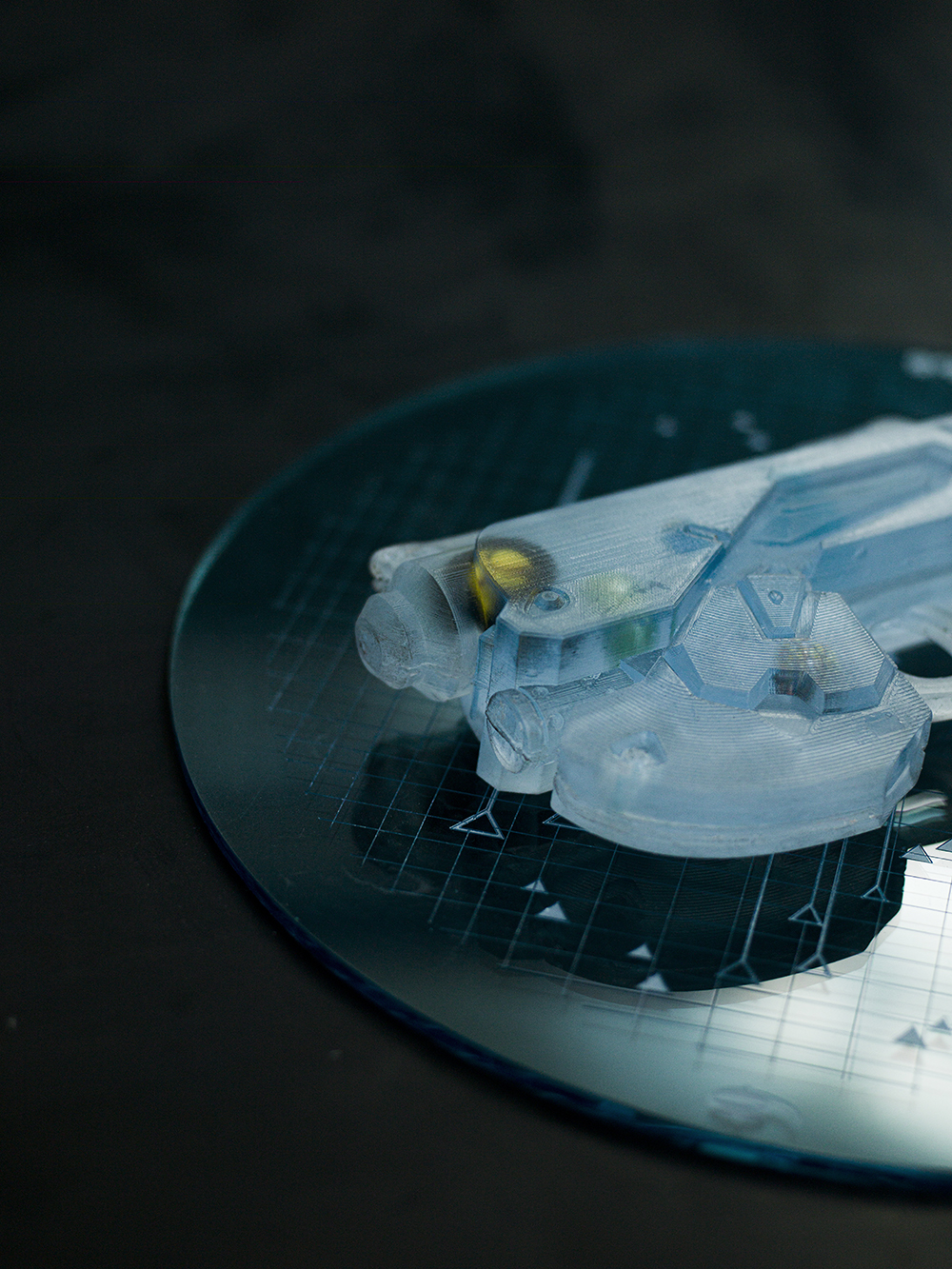
Suspended cosmos
悬置的宇宙, 2021
3D print casted resin, marble, jasmonate coated wood, wax, laser cut on acrylic board
100W x 100H x 6D CM, 25W x 20H x 10D CM
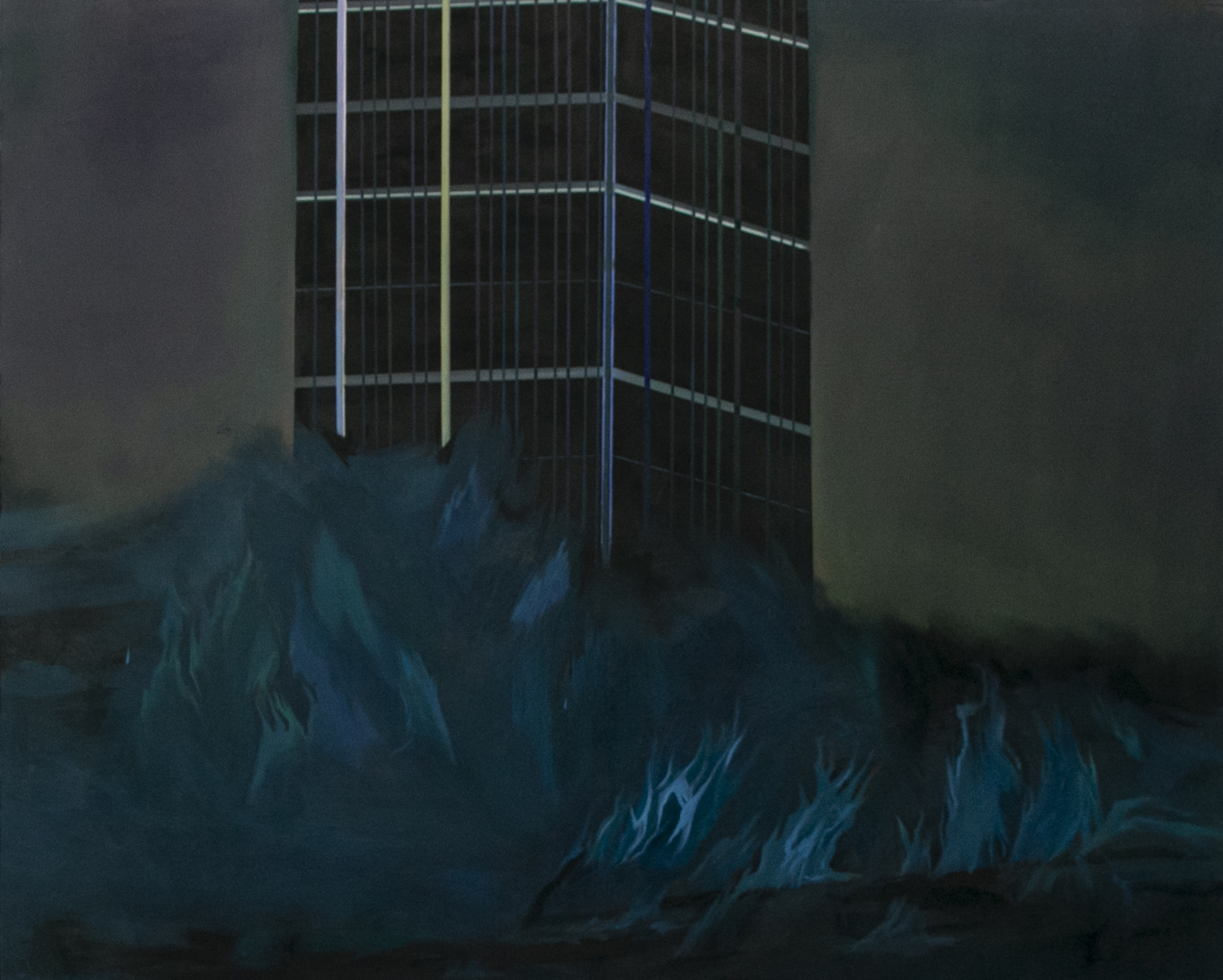
Data center on fire
燃烧的数据中心, 2021
Oil, MDF
152W x 122H x 5D CM
Poster:

Floorplan:

2021 Goldsmiths, University of London
SUSPENDED COSMOS
Have you also been spending too many hours in front of screens recently?
Uchercie Tang’s paintings and sculptures are material traces of a simulated world – a technoromantic game of photons and speculative symbolism without blue light. Suspended Cosmos presents a devastated scene: a robot lays flat on the ground, while a wig and a loaded gun sit at a few meters distance from each other. Black walls tower above a field of blue flames as a water fountain trinkles serenely. A car flees the scene and heads towards the unrendered distance. What happened?
Our ethereal digital presence and the simulations that typically allow for some escape from reality could feel more comforting and familiar than the images relayed from the physical world over the duration of this MFA. As we continue to adapt to varying states of emergency, their imagery, and the ‘strange temporalities’ [1] of the pandemic, everyday life has taken an uncanny dimension with a thrust of disassociation from habituality. Empty city streets, bizarre interactions, social cravings, new lingos, risk calculations, and logistics planning. Stay calm, remember your training, be reasonable.
In Greek, art and technology have the same root: technē. Despite their commonalities, their historical development through modernism has associated technology with a materialisation of rational thought, and art with expressions of irrationality, or emotion. The philosopher Yuk Hui reminds us that from ‘ancient cave paintings to modern AI paintings, art depends on technology to be its medium in order to expand and express itself. At the same time, art is capable of returning technology to a broader reality’ [2]. The long history of the medium of painting is of particular interest here, as the endless possibilities of layering pigments and the ‘limitation of the frame (are) able to inscribe the infinite through the creation of tensions on the canvas, preserving such a contradiction without a resolution’ [3].
The paintings and sculptures in Suspended Cosmos are fragments from an eerie yet recognisable situation that resists narrative deciphering: a tragic scenario, a crime scene, elemental destruction… Uchercie engages with worldmaking and world disrupting, suspending a moment of action in time like pressing the pause button. The dramatic landscape of Data center on fire (2021) and the physics of bursting water in Synechdoce of construction (2021) take on the quality of the sublime. The time that a painting captures is likened to a cosmic collapse in the moment of a gunshot, or an augmented reality program on standby in a digital storage device.
40 years have passed since Jean Baudrillard stated: ‘We live in a world where there is more and more information, and less and less meaning’ [4]. The advent of new technologies with their associated social organisations and institutions are posing an existential question to humanity through a generalization and industrialisation of ambient computing: ‘a robotized living space, which means that there is gradually less and less left for me to do (I no longer need to open doors, order groceries and so on), and means that I gradually lose all my savoir faire and savoir vivre, my knowledge of how to do things and how to live’ [5]. Today, we lead the extensions of our organic beings to smart cities, supply chains, and the cloud: a new stage of exosomatization.
A tension runs throughout Suspended Cosmos, between the agency of an automated society, and that of rogue forces interrupting optimised procedures: between image and user. Technological media create a limbo territory that increasingly pervades our existence, suspending lives in cyberspace and simulations that blend with physical presence. Try again, confirm you are not a robot, scan your face here, we prefer contactless approval. Receive your order in fewer packages and trips? The over rationalization of contemporary societal processes leads to confusion for many. Move on, it doesn’t matter what happened. ‘You just know the robots are not the only thing you need to know’ [6].
-Nikos Akritidis
[1] Gentile, J. (2020) Time may Change Us: The Strange Temporalities, Novel Paradoxes, and Democratic Imaginaries of a Pandemic, Journal of the American Psychoanalytic Association, Vol. 68 Issue 4
[2] Hui, Y. (2020) Art and Cosmotechnics, Minneapolis: University of Minnesota Press, p. 28
[3] ibid, p. 12
[4] Baudrillard, J. (1983) Simulacra and Simulation (original French version in 1981), p. 79, Los Angeles: Semiotext
[5] Stiegler, B. (2020) Nanjing Lectures (2016-2019), p. 233, London: Open Humanities Press
[6] Extract from online Text Generation API (based on the GPT-2 mode by OpenAI with input: ‘the robot is dead’